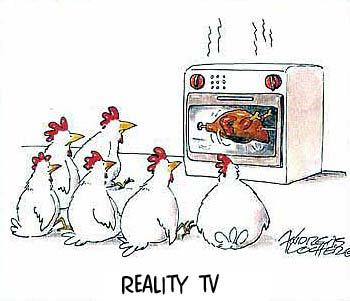

The significant changes in technology has made possible the creation of new styles of recording and editing material. This technology has transformed our communication technology. Digitalisation and fibre optic technology are paving the way to a convergence between television, telecommunications and computer industries, creating new media industries. Big Brother presents footage like that from a web camera continuing the voyeuristic theme of Big Brother while giving an authentic approach to the episodes. Big Brother is a tailored experience, hosting the digital revolution. The creation of programs, such as Big Brother, are examples of a changing television community, adapting to the new broadcasting media.
Television in the twentieth century has led producers to sophisticate programming styles through the aid of technology. The global context in which reality programs are produced has constructed large media conglomerates becoming international identities. While the creation of this media genre was created in response to economic hardships faced by networks, production techniques are of a non traditional nature. Labour for the storyline is created through scripted situations by the production team, cameras work and production inputs, sets, props and costumes all set the narrative. Production budgets meant that programs are advertiser driven, making new markets open to consumers, such as merchandise. In the 1990s the economic environment affected both free to air and pay television networks. This environment led to a situation where distribution affected production. The rapidly changing costs in network television started independent productions. Network standards and practices departments implemented self censorship as a cost cutting device. Big Brother embraces low production costs and instead of paying for celebrities to be involved with the show they create instant celebrities from the characters on the show.
Television in the twentieth century has led producers to sophisticate programming styles through the aid of technology. The global context in which reality programs are produced has constructed large media conglomerates becoming international identities. While the creation of this media genre was created in response to economic hardships faced by networks, production techniques are of a non traditional nature. Labour for the storyline is created through scripted situations by the production team, cameras work and production inputs, sets, props and costumes all set the narrative. Production budgets meant that programs are advertiser driven, making new markets open to consumers, such as merchandise. In the 1990s the economic environment affected both free to air and pay television networks. This environment led to a situation where distribution affected production. The rapidly changing costs in network television started independent productions. Network standards and practices departments implemented self censorship as a cost cutting device. Big Brother embraces low production costs and instead of paying for celebrities to be involved with the show they create instant celebrities from the characters on the show.


